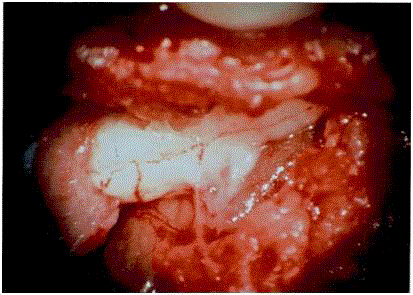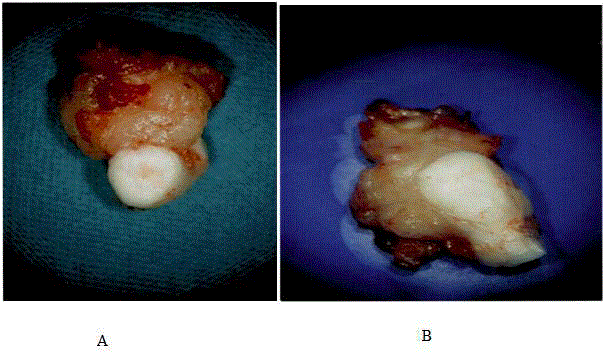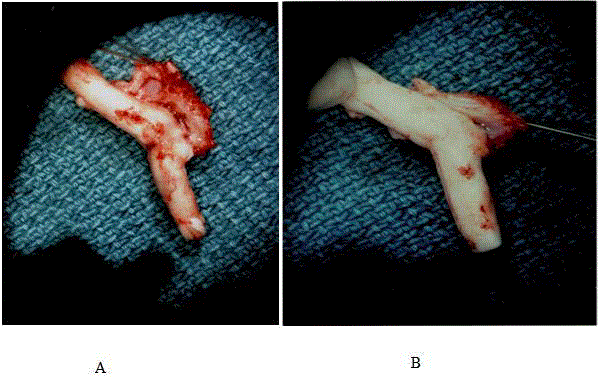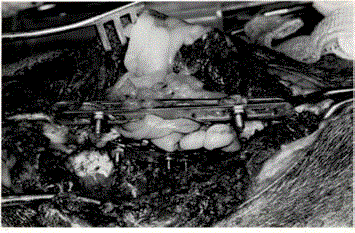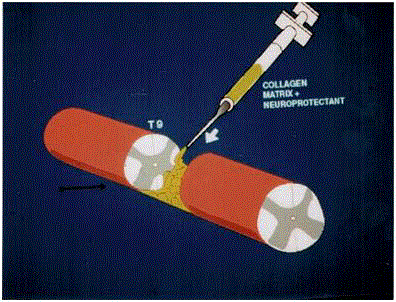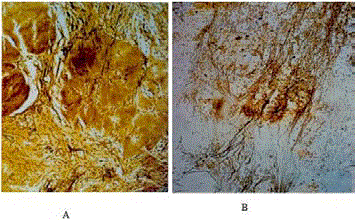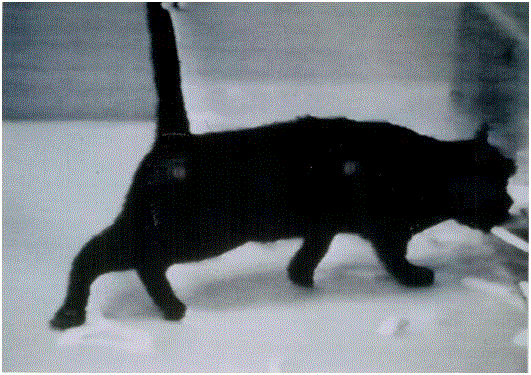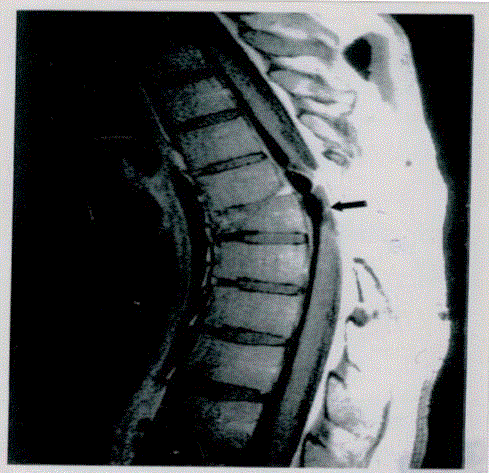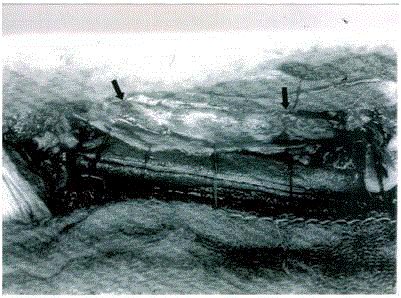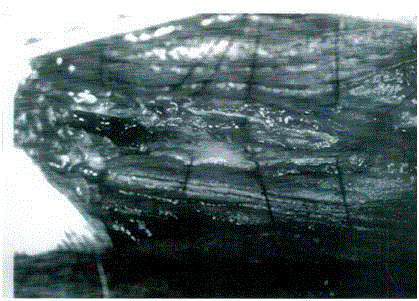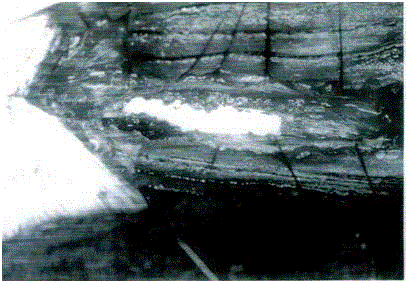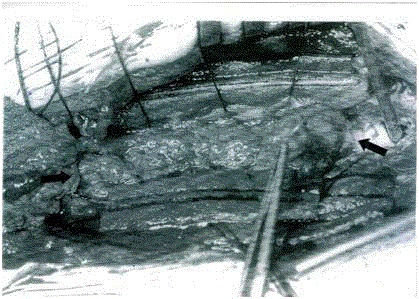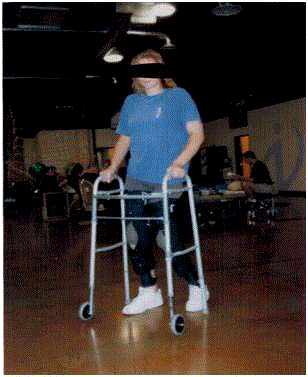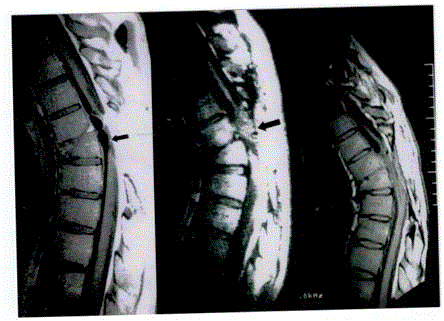Case Report
Improvement by the Omentum on Spinal Cord Injuries
Harry S Goldsmith*
Department of Neurological Surgery, University of California, USA
*Corresponding author: Harry S Goldsmith, Department of Neurological Surgery, University of California, USA
Published: 18 Jul, 2018
Cite this article as: Goldsmith HS. Improvement by the
Omentum on Spinal Cord Injuries. Clin
Surg. 2018; 3: 2039
Abstract
Background: It the late 1800's, Ramon y Cajal, Father of Neuropathology, stated that the reason
patients who suffered a Spinal Cord Injury (SCI) do not improve is that a scar develops at the site
of the SCI which prevents axons from penetrating through the scar barrier. The aim of the study
was to learn if a scar could be prevented in an acute SCI and if the scar could be surgically removed
in a chronic SCI, followed by reconstruction of the spinal cord, which could lead to functional
improvement following the injury.
Methods: A piece of a spinal cord was removed in cats followed by subsequent functional
improvement. It was found that when a section of the spinal cord in animals could be surgically
excised with reconstruction of the spinal cord being successfully performed followed by functional
success.
Results: When a piece of spinal cord was surgically removed in cats, followed by reconstruction of
the spinal cord, the spinal cord defect was filled with collagen and an intact vascularized omentum
was placed on the underlying collagen connection. This procedure proved successful. This procedure
was also successful in a patient who underwent excision of 1.6" of her spinal cord with the patient’s
subsequent ability to walk, a consequence confirmed by video.
Conclusion: It appears that in an acute spinal cord injury, a scar can be prevented. In a chronic
spinal cord injury, it may be possible in the future for a chronic spinal cord scar to be removed with
expectation of functional improvement.
Keywords: Spinal cord injury; Fibrinogen; Omentum; VEGF
Introduction
A spinal cord injury in a human is catastrophic. When such an injury occurs, a cascade of pathobiological events develops within the spinal cord that can result in irreversible spinal cord damage. This paper will attempt to show that placing the omentum directly on an injured spinal cord may prove instrumental in the future treatment of acute and chronic spinal cord injuries.
Pathophysiology of Spinal Cord Injuries
Shortly after a Spinal Cord Injury (SCI) occurs, edema fluid begins to leak through the endothelial lining of damaged capillaries located mainly in the central gray matter of the Spinal Cord (SC). This edema fluid is rich in plasma protein and has a high osmotic pressure that attracts increasing amounts of edema fluid as the edema fluid expands and moves toward the peripheral white matter of the SC. The expanding fluid volume can exert pressure on capillaries in the center of the SCI causing harmful neurologic effects. It is believed that by placing an intact omental pedicle directly on a spinal cord shortly after injury, a dynamic absorptive equilibrium is established between the production of edema caused by the SC injury and the absorption of the edema by the overlying omentum. The absorption of edema accumulation can lower tissue pressure in the area of an SCI, which allows capillary blood flow to be maintained in the area of injury. Decreasing the pressure on SC capillaries also has a beneficial effect on veins in the area of an SCI since a high pressure on veins in the area of SCI can accelerate the leaking of edema fluid from the porous capillaries at the injury site. Direct pressure by the accumulation of edema fluid on SC capillary blood vessels can lead to permanent neurological damage. Maintenance of capillary blood flow is critical in an acute SCI.
Conceptual History of Omental Usage for an SCI
The use of the omentum in our laboratory and in the clinic was studied during the 1960s to 1980s. It was first applied to a patient with lymph edema of the arm resulting from a radical mastectomy and post-operative radiation for the treatment of breast cancer. Post-operative lymph edema occurred due to the absence of lymphatics in the arm and axilla resulting from the surgery and radiation. Lymphatics are present in the omentum and it seemed reasonable that placing the omentum with its lymphatics into a lymph edematous extremity could compensate for the surgically removed lymphatics that had resulted in her lymph edema. She and additional patients who had undergone omental placement into their lymph edematous extremities experienced post-operative improvement in their involved extremities [1]. The success seen in the treatment of lymph edema by omental placement into a lymph edematous extremity led to the idea that perhaps increased blood flow to an SCI from the omentum might prove valuable in the treatment of an SCI. This belief was supported by the fact that the omentum incorporates Vascular Endothelial Growth Factor (VEGF) in its tissues. VEGF is the most angiogenic substance in the body and the omentum contains eight times the quantity of VEGF in its tissue compared to all other tissues in the body [2]. After further studies in our laboratory, decreased blood flow to an SCI was considered to be the basis for the poor neurological results that follow an SCI. This idea was based on the finding of a large omental blood vessel located on the surface of an experimentally injured spinal cord of a cat that was autopsied fifty-two hours after omental placement on the SC (Figure 1). This observation at that time seemed to support the theory that decreased SC blood flow was implicated in the production of post-injury SC scar tissue. However, this theory was later disproved.
Figure 1
Figure 2A and B
Figure 3A and B
Figure 4
Figure 4
End of experiment. Spinal cord fused, omentum wrapped around
spinal cord transection site and steel plates stabilizing vertebral column.
Figure 5
Figure 6
Figure 6
(A) Axons growing longitudinally through center of collagenomental
bridge. (B) Axons exiting at the distal end of omental-collagen
bridge. Axons grow into distal spinal cord at 1 mm per day. Collagen is in the
process of biodegrading.
Acute Spinal Cord Injuries
Cats were first used to evaluate the effect of the omentum on an SCI. It was important early in our studies to learn the optimal time that the omentum could be placed on an SCI if neurological improvement was to occur. The timing of omental placement was found to be important. When the omentum was placed on an SCI within 6 hr to 8 hr after injury, no SC scar was found in the cats at sacrifice thirty days later (Figure 2A and 2B). In contrast, if no omentum had been placed on an injured SC, a scar was present thirty days after the SCI (Figure 3A and 3B).The timing of omental placement on an SCI in cats was obviously critical in preventing scar development following an SCI. If the omentum is used in the future treatment for patients with an SCI, it will be necessary to learn the amount of time that can elapse before placement of the omentum on an SC will no longer be successful in preventing SC scar development. The original theory that the increase in blood supply from the omentum to the SC could be the basis for the lack of SC scar slowly diminished. A new theory suggested that the lack of scar that failed to develop following an SCI in which the omentum had been applied resulted from either an anti-fibrotic agent present in the edema fluid that occurs with an SCI or that the lack of scar development was due to an unknown agent in the edema fluid that was absorbed by the overlying omentum.
Chronic Spinal Cord Injury
Professor Ramon y Cajal, the father of neuropathology and neuroscience, stated over a hundred years ago that the reason spinal cord injured patients do not regain neurological improvement following an SCI is that scar develops at the site of the injury, resulting in the inability of axons to penetrate through the scar barrier [3]. In 2007 and 2010 two important papers published by Schachtrop and his associates described the large amount of fibrinogen that is mixed in the edema fluid that occurs with an SCI. As fibrinogen is the agent that initiates the earliest physiological reactions that results in scar development within an SCI, this information strongly suggested that it is the fibrinogen in edema fluid that is responsible for the scar development that occurs after an SCI [4,5]. It was reasoned that if fibrinogen could be the basis for the scar that develops after SCI, it became reasonable to believe that the omentum, with its enormous ability to absorb fluids, might be able to absorb the fibrinogen present in the edema fluid that occurs after an SCI. If this did occur, the absorption of fibrinogen could limit or even prevent scar development at the site of an SCI. This would limit an acute SCI with its absence of scar from becoming a chronic SCI with its presence of scar. The ability of the omentum to absorb fibrinogen in a post-injury SC became a key component in our laboratory’s quest to find a way to improve the post-injury neurological status that occurs after an SCI [6].
Basic Research
Professor Ramony Cajal stated that functional improvement
following an SCI could not occur because axons were prevented from
progressing through the scar barrier that had developed at the site of
the SCI. This led our research to develop methods that would:
1. Prevent scar from forming at the time of an acute SCI.
2. Would successfully remove the SC scar that is present in a
chronic SCI.
Preventing of a scar after an SCI was easily accomplished in an
acute SCI simply by placing the omentum directly on an SCI early
after the SCI, as shown in Figure 2A and 2B. However, successfully
removing scar tissue from a chronic SCI was much more difficult.
Various techniques were carried out in the hope of developing
a procedure to remove a scarred section of an SC followed by the
reconstruction at the injury site [7-11]. It was believed that removing
a section of SC from an animal would be comparable to removing
an SC scar from a human. This was done by removing a half-inch
of spinal cord in cats at the T-9 level. The procedure presented two
surgical problems: first, how to close the gap between the separated
stumps of the divided spinal cord, and second, how to bring the cut
edges of the divided spinal cord together without any tension at the
connecting edges of the divided SC. The first problem involved the
closing of the SC gap, which was accomplished by removing vertebrae
that allowed the cut edges of the divided SC to be easily rejoined;
the second challenge as to how to bring the cut edges of the divided
SC together without tension was solved by using a laser-welding
technique. The circular edges of the divided proximal and distal SC
stumps were fused together using a CO2 laser set at 1-2 watts of energy
with the laser beam carefully directed under microscopic control.
The heat energy of the laser beam penetrated only 1.2 mm into the
spinal cord, thus sparing the deeper placed neuro anatomical tracts.
Following the fuse-welding laser process that firmly joined the cut
ends of the divided spinal cord without tension, a pedicled omental
flap was wrapped around the connected transection site of the SC in
order to absorb the edema fluid that accumulated at the laser-treated
site, and to increase vascularization at the transection site. The final
step in the CO2 laser procedure was to firmly stabilize the vertebral
column so there would be no tension at the SC transection site. This
was accomplished by fixing two long stainless steel plates on both
sides of the dorsal spinal processes, with the plates extending above
and below the SC transection site (Figure 3 and 4). The results of the
above experiment showed that seven of fifteen cats that had a piece
of their SCs removed followed by laser-welding reconstruction and
omental wrapping around the SC transection site only had return of
Somatosensory-Evoked Potentials (SEPs). Unfortunately, none of the
cats had any functional return and the experiment was considered
a failure. A subsequent operation was eventually developed in cats
in the hope of promoting longitudinal axonal progression in the SC
that could lead to the return of motor function distal to a complete
SC transection. This procedure entailed the removal of a half-inch
piece of SC at the T-9 level that resulted in an SC gap of 3 mm to 6
mm (Figure 5). The gap was filled with collagen that became a firm
bridge between the divided proximal and distal spinal cord stumps.
In addition, a pedicled omental graft was placed directly on the
collagen-omental bridge that also covered the proximal and distal
spinal cord stumps. The collagen-omental bridge that filled the gap
of a divided SC in cats clearly demonstrated that axons had grown
longitudinally through the collagen-omental bridge with axons
progressing down into the distal spinal cord at the rate of 1 mm/
day (Figure 6A and 6B). When the animals were sacrificed three
months after surgery, axons had progressed into the distal SC for a
distance of 90 mm. When 4-aminopyridine had been added to the
collagen, axons progressed even further. Most impressively, several
cats developed coordinated hind-fore front walking ability (Figure
7). These studies unquestionably showed that axons could progress
through a reconstructed SC transection site and make connections
with neurological elements in the distal SC. These findings were later
confirmed in a human patient whose case is reported below.
Figure 7
Figure 7
Cat showing coordinated walking ability following excision of a
piece of spinal cord and collagen-omentum reconstruction.
Figure 8
Figure 9
Figure 10
Figure 11
Case Presentation
The patient was a 24-year-old woman who was injured thirtynine months earlier in a skiing accident that resulted in a dislocation fracture at the T6 and T7 level with associated fractures of the vertebral arches at T6 on the left and T7 on the right. Following her injury, the patient had complete motor loss below the T6 and T7 level with an associated sensory loss at that level. Magnetic Resonance Imaging (MRI) taken shortly after her injury was officially described as showing a “complete anatomical transection” of her spinal cord at the T6 and T7 level although a very small connection was found at surgery (Figure 8). Three years after her injury, the patient underwent reconstruction of her injured spinal cord using the same collagenomental technique that had been successfully used in cats. An extremely large spinal cord scar at the T6 and T7 level was found at surgery and was excised. The scar measured 1.6 inches (4 cm) in length (Figure 9). Following the excision of this extensive scar, the gap in the spinal cord defect was filled with 4 to 5 cc’s of collagen (Figure 10 and 11), followed by placement of an intact omental pedicle directly onto the collagen-omental bridge (Figure 12). Eight months after surgery the patient began to have function in her ankles and legs, and oneand- a-half years later while undergoing physiotherapy, she regained her ability to walk (Figure 13 and 14). Her walking ability has been confirmed via video that has been shown at several international conferences.
Figure 12
Figure 13
Conclusion
This paper discusses a surgical approach for the treatment of SCIs. As described by Ramony Cajal, the prevailing problems in the treatment of spinal cord injuries are the early development of scar in an acute spinal cord injury and the presence of scar in a chronic spinal cord injury. The first problem can be controlled in acutely injured spinal cords simply by placement of the omentum on the SCI shortly after injury. Based only on a single chronic spinal cord injured patient, the removal of an SC scar, followed by SC reconstruction can lead to functional improvement. Observations reported in this paper may prove of potential importance in the future treatment of an SCI. Ramon y Cahal was correct in claiming that if scar is present in the SC, axons would be unable to progress. It was found in our studies, however, that axons could progress longitudinally through a reconstructed transected area of an SC at the rate of 1 mm/day. An additional finding of great importance is that an injured spinal cord can heal itself without the need of stem cells or special drugs. This ability of the SC to heal itself has been confirmed by serial MRIs. Albert Einstein claimed that scientific progress requires intuition and imagination. As with any new surgical procedure, courage is also necessary. A surgeon performing a new operation for the first time must have the courage to perform a procedure with which he or she is not familiar. Even more important is the courage of the patients who will submit to a new surgical procedure that cannot guarantee success, and, even when successful, requires long-term rehabilitation. Future control studies of the omentum for SCIs are necessary to determine if the omentum is of benefit in the treatment of spinal cord injuries. It is hoped that researchers and clinicians will not only independently confirm the data reported in this paper but will further explore the unique and vast potential of the omentum.
Figure 14
Figure 14
MRI’s taken on yearly basis. MRI on left taken at time of injury.
Center MRI taken one year after collagen omental operation shows a soft
tissue mass at the T-6 to T-8 position. MRI on right five years after operation
shows healed spinal cord connecting proximal and distal spinal cord
segments of previously divided spinal cord.
Ethics Approval and Consent to Participate
All procedures performed in studies involving participants were in accordance with the ethical standards of the institutional and/or national research committee.
Acknowledgement
All applicable international, national, and/or institutional guidelines for the care and use of animals were followed. All procedures performed in studies involving animals were in accordance with the ethical standards of the institution or practice at which the studies were conducted.
References
- Goldsmith HS, de los Santos R, Beattie EJ Jr. The relief of chronic lymphedema by omental transposition. Ann Surg. 1967;166(4):573-85.
- Zhang QX, Magovern CJ, Mack CA, Budenbender KT, KO W, Rosengart TK. Vascular endothelial growth factor is the major angiogenic factor of omentum-mediated angiogenesis. J Surg Res. 1997;67(2):147-54.
- Cajal Ramon Y. Degeneration and Regeneration of the Nervous Systems (1909). New York. 1950;749-50.
- Schachtrup C, Lu P, Jones LL, Lee JK, Lu J, Sachs BD, et al. Fibrinogen inhibits neurite outgrowth via beta 3 intigrin-mediated phosphorylation of the EGF receptor. Proc Natl Acad Sci USA. 2007;104(28):11814-9.
- Schachtrup C, Ryu JK, Helmrick MJ, Vagena E, Galanakis DK, Degen JL, et al. Fibrinogen triggers astrocyte scar formation by promoting the availability of active TGF-B after vascular damage. J Neurosci. 2010;30(17):5843-54.
- Goldsmith HS. Fibrinogen absorption by omentum: can it improve spinal cord injuries. American Journal of Neuroprotection and Neuroregeneration. 2016;8(1):54-7.
- Goldsmith HS, Fonseca AJ, Porter J. Spinal cord separation: MRI evidence of healing after omentum-collagen reconstruction. Neurol Res. 2005;27(2):115-23.
- Goldsmith HS. Can the standard treatment of acute spinal cord injury be improved? Perhaps the time has come. Neurol Res. 2007;29:16-20.
- Goldsmith HS. Treatment of acute spinal cord injury by omental transposition: A new approach. J Am Coll Surg. 2009;208(2):289-92.
- Goldsmith HS. Application of the omentum to the brain and spinal cord. In: The Omentum: Basic Research and Clinical Applications. Goldsmith HS, Editor. Woodbury CT, Cine-Med Publishing. 2010;37-52.
- Goldsmith HS. Omental transposition and spinal surgery: Emphasis on revascularization and scar prevention. In: Spinal Surgery: Techniques, Complication Avoidance and Management. Ed: Edward C Benzel, Elsevier Saunders, Philadelphia 121. 2012;1183-7.

